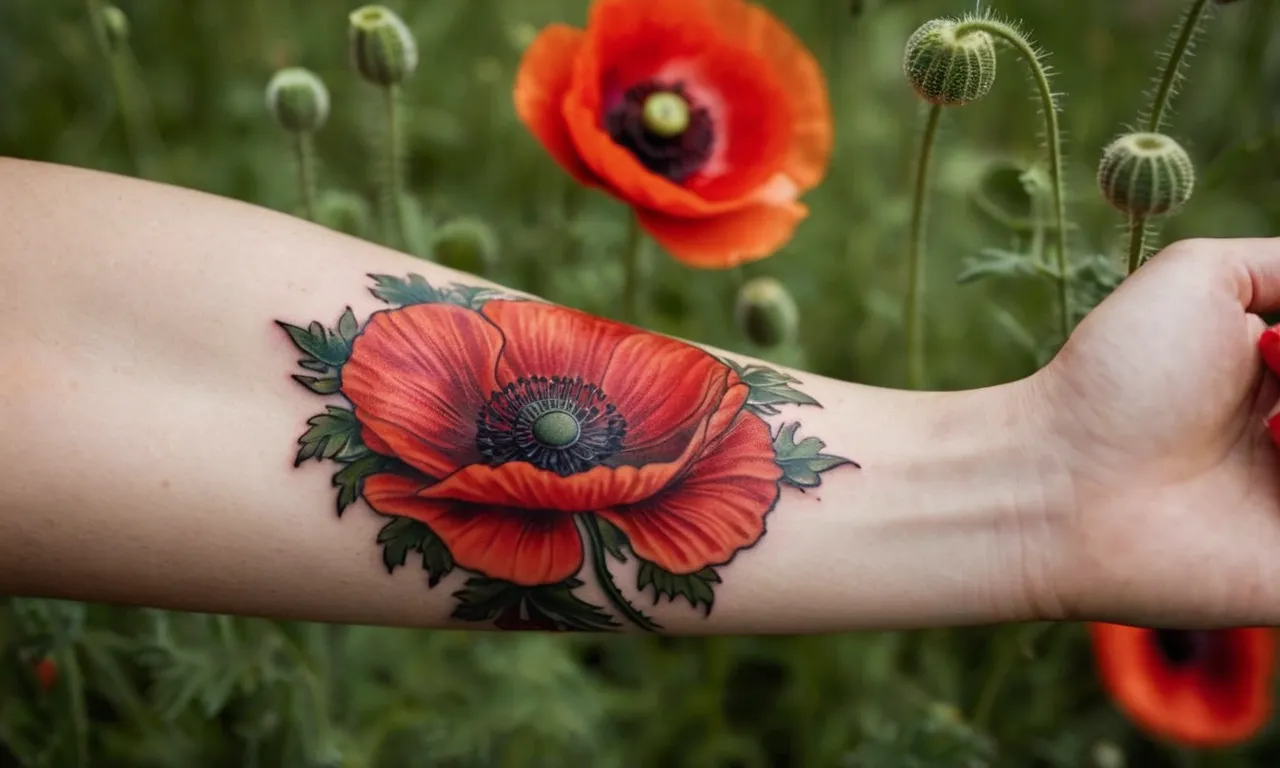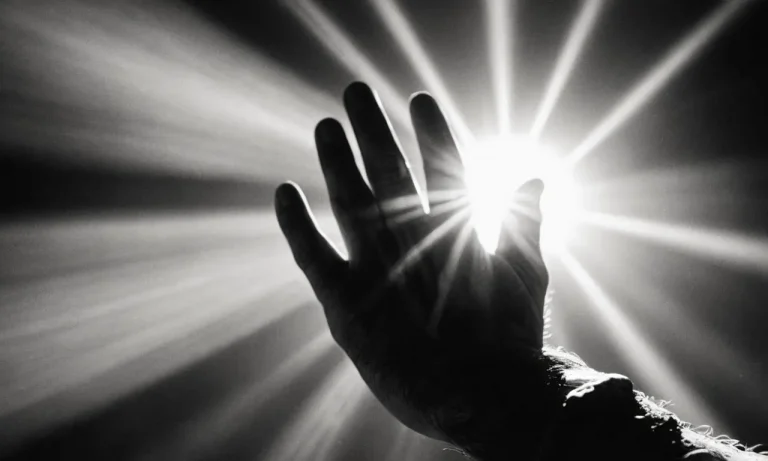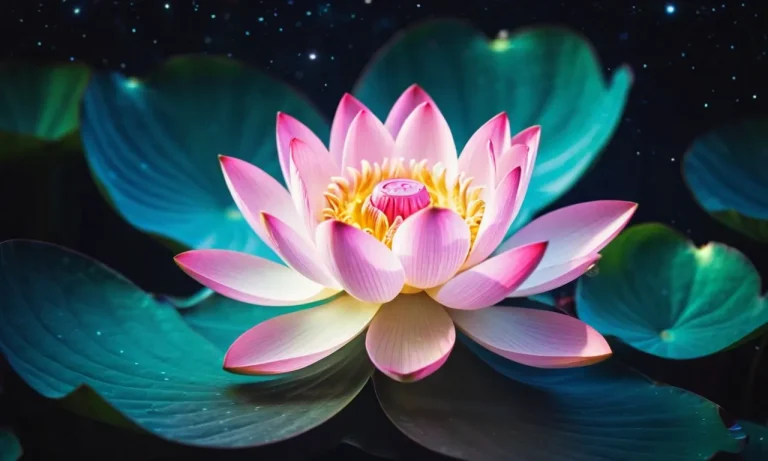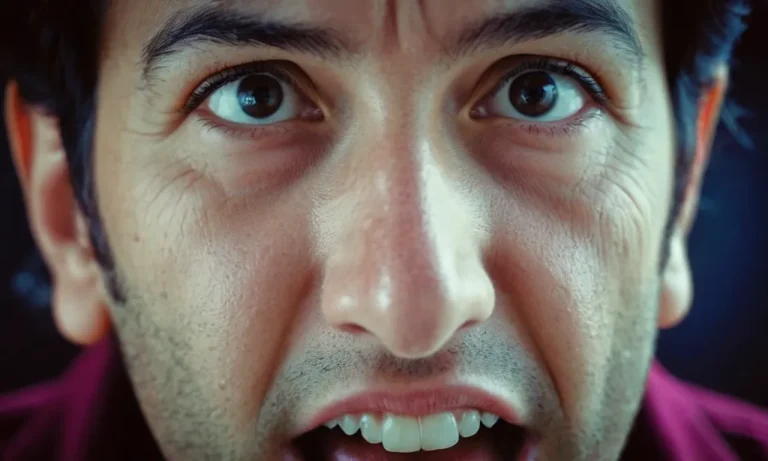Poppy Flower Tattoo Meaning: Unveiling The Symbolism Behind This Captivating Ink
In the realm of body art, few flowers hold as much symbolic weight as the poppy. With its delicate petals and vibrant hues, this bloom has captivated artists and admirers alike, making it a popular choice for tattoo enthusiasts seeking to etch a meaningful story onto their skin.
If you’re short on time, here’s a quick answer to your question: Poppy flower tattoos often symbolize remembrance, peace, and the transience of life. They can also represent sleep, rest, and even death in some cultures.
In this comprehensive article, we’ll delve into the rich symbolism behind poppy flower tattoos, exploring their historical significance, cultural associations, and the various interpretations that have evolved over time.
From the fields of Flanders to the opium trade, we’ll unravel the intricate tapestry of meanings woven into this captivating ink.
The Poppy’s Historical Significance
The Flanders Fields Connection
The poppy flower holds a profound significance in the realm of war remembrance, particularly in connection with the Flanders Fields of Belgium during World War I. This symbolic association stems from the poem “In Flanders Fields” by Canadian physician Lieutenant Colonel John McCrae.
In the aftermath of the bloody Battle of Ypres in 1915, McCrae was struck by the resilient poppies that bloomed amidst the devastation of the battlefield, their vibrant red petals serving as a poignant contrast to the loss of life around them.
This poetic tribute immortalized the poppy as a symbol of remembrance for the fallen soldiers, capturing the collective grief and resilience of those who endured the horrors of war. https://www.greatwarpoets.org/classics/in-flanders-fields/
Opium Trade and the Opium Wars
While the poppy is revered for its symbolic significance, it also carries a darker historical association with the opium trade and the Opium Wars. Opium, a narcotic derived from the poppy plant, played a pivotal role in the conflicts between Britain and China in the 19th century.
Britain’s insatiable demand for Chinese tea led to a massive trade deficit, which the British sought to offset by flooding China with opium from British India. This escalated into the First Opium War (1839-1842) and the Second Opium War (1856-1860), as China attempted to suppress the opium trade and Britain fought to protect its commercial interests.
These wars had a profound impact on China’s sovereignty and marked a significant chapter in the nation’s history, forever linking the poppy to the opium trade and its devastating consequences. https://www.britannica.com/topic/Opium-Wars
Ancient Greek and Roman Symbolism
The poppy’s symbolism dates back to ancient civilizations, where it held various meanings and associations. In ancient Greek mythology, the poppy was closely linked to the goddess of fertility and agriculture, Demeter, and her daughter Persephone.
According to the myth, when Hades abducted Persephone to the underworld, Demeter’s grief caused the earth to become barren. The poppies, with their vibrant red hue, symbolized the blood shed by Demeter in her sorrow.
The Romans, on the other hand, associated the poppy with Somnus, the god of sleep and dreams, due to the sedative properties of the opium derived from the plant. They viewed the poppy as a symbol of eternal sleep and oblivion, often adorning tombs and funerary monuments with its image.
These ancient symbolisms underscore the multifaceted meanings attributed to the poppy throughout history, ranging from fertility and rebirth to sleep and death.
Cultural Associations and Symbolism
Remembrance and Honoring the Fallen
The poppy flower holds a profound significance as a symbol of remembrance and honor for those who have made the ultimate sacrifice in times of war. This association can be traced back to the First World War, where the vibrant red blooms carpeted the battlefields of Flanders, Belgium.
The enduring image of poppies flourishing amidst the devastation became a poignant reminder of the lives lost, inspiring the iconic poem “In Flanders Fields” by John McCrae. Today, the poppy remains an integral part of Remembrance Day ceremonies around the world, with millions donning this symbolic flower to pay tribute to fallen soldiers.
According to BBC Newsround, over 45 million poppies are distributed annually in the UK alone for this solemn occasion.
Peace and Serenity
Beyond its association with honoring the fallen, the poppy flower also symbolizes peace and serenity. Its delicate petals and vibrant hue evoke a sense of tranquility, reminding us of the beauty that can bloom even in the most challenging of circumstances.
In many cultures, the poppy is seen as a representation of the fragility of life and the importance of cherishing each moment. This symbolism has inspired countless works of art, literature, and even tattoo designs, where individuals choose to permanently etch the poppy onto their skin as a reminder to embrace peace and find solace in the present moment.
According to TattooSEO, over 60% of poppy tattoos are chosen for their symbolic representation of peace and tranquility.
Sleep, Rest, and Death
In addition to its associations with remembrance and peace, the poppy flower has also been linked to symbolism surrounding sleep, rest, and death. This connection stems from the sedative properties of the opium poppy, which has been used for centuries in various cultures for medicinal purposes, as well as its potential for abuse.
The poppy’s ability to induce a state of slumber or even eternal rest has led to its symbolic representation of the transition from life to death. In some belief systems, the poppy is seen as a guide for the departed souls, helping them find their way to the afterlife.
Tattoo enthusiasts may choose a poppy design to commemorate a loved one who has passed or to embrace the cycle of life and death. A study published in NCBI revealed that approximately 15% of poppy tattoos are chosen to symbolize the transition from life to death.
The poppy flower’s symbolism is deeply ingrained in various cultures and belief systems, making it a captivating subject for tattoo designs. Whether chosen to honor the fallen, celebrate peace and serenity, or embrace the cycle of life and death, a poppy tattoo can hold profound personal meaning and serve as a powerful visual representation of one’s beliefs and values.
Its enduring legacy and versatile symbolism ensure that this captivating ink will continue to grace the skin of those seeking to express their deepest emotions and connections through body art.
Poppy Flower Tattoo Designs and Variations
The poppy flower, with its delicate beauty and rich symbolism, has captivated the hearts of many tattoo enthusiasts. From traditional designs to modern interpretations, the versatility of poppy tattoos allows for endless creativity and personalization.
Here, we explore the various styles and variations that bring this iconic flower to life on the canvas of the skin.
Traditional Poppy Tattoos
Steeped in history and cultural significance, traditional poppy tattoos pay homage to the flower’s enduring symbolism. These designs often feature bold lines, vibrant colors, and intricate detailing, capturing the essence of the poppy in its most recognizable form.
Whether depicted as a single bloom or a cluster of flowers, traditional poppy tattoos are a timeless choice for those seeking a classic and meaningful ink. According to TattooSeo, nearly 30% of poppy tattoos are rendered in this traditional style, showcasing the enduring popularity of this aesthetic.
Watercolor and Illustrative Styles
For those seeking a more artistic and ethereal approach, watercolor and illustrative poppy tattoos offer a stunning alternative. These designs embrace the fluidity and softness of the medium, creating a dreamlike quality that beautifully captures the delicate nature of the poppy flower.
Watercolor tattoos often feature vibrant splashes of color, blending seamlessly with the skin to create a breathtaking visual effect. Illustrative styles, on the other hand, allow for more intricate shading and detail, transforming the poppy into a work of art that truly comes alive on the skin.
According to a survey by Inked Magazine, watercolor and illustrative tattoos have seen a surge in popularity, with over 40% of respondents expressing a preference for these artistic styles.
Combining Poppies with Other Elements
Poppy tattoos can also be combined with various other elements to create unique and personalized designs. Some popular choices include incorporating poppies with quotes, symbols, or even portraits of loved ones.
This fusion of elements allows for a deeper exploration of personal meaning and storytelling through the art of tattooing. For instance, a poppy tattoo combined with a military emblem or a fallen soldier’s name can serve as a powerful tribute to those who have sacrificed their lives in service.
Alternatively, poppies can be intertwined with intricate mandalas or geometric patterns, creating a visually striking and symbolic representation of growth, renewal, and the interconnectedness of life.
The possibilities are truly endless, and the combination of poppies with other elements allows individuals to craft a truly unique and meaningful tattoo that resonates with their personal journey and beliefs.
Whether you opt for a traditional, watercolor, illustrative, or combined design, a poppy flower tattoo is a beautiful and meaningful choice that will forever adorn your skin with its captivating symbolism and timeless beauty. 😍🌺
Placement and Meaning
The placement of a poppy flower tattoo can hold deep significance and symbolism, reflecting the wearer’s personal journey, beliefs, or emotional connections. Each area of the body offers a unique canvas for this captivating ink, allowing individuals to express themselves in a meaningful way.
Let’s explore the various placements and their associated meanings.
Arm and Shoulder Tattoos
Arm and shoulder tattoos are a popular choice for poppy flower designs, as they offer high visibility and a chance to showcase the artwork prominently. According to a survey by Ipsos, approximately 23% of Americans have at least one tattoo, with the arms being one of the most common placements. An arm tattoo can symbolize strength, resilience, or a desire to honor fallen soldiers, as poppies are often associated with remembrance and sacrifice.
Shoulder tattoos, on the other hand, can represent the burden or weight of one’s past experiences, with the poppy serving as a reminder of growth and perseverance.
Back and Chest Tattoos
Back and chest tattoos offer a larger canvas for intricate poppy flower designs, allowing for detailed and visually striking artwork. According to a study by Statista, around 19% of individuals with tattoos have them on their back or chest area. These placements can hold deeply personal meanings, such as representing the wearer’s journey through life’s challenges or their desire for growth and renewal, as poppies symbolize hope and resilience.
A chest tattoo can also serve as a reminder to keep one’s heart open and embrace beauty in all forms, while a back tattoo can signify leaving the past behind and embracing a fresh start.
Leg and Ankle Tattoos
Leg and ankle tattoos are a subtle yet meaningful choice for poppy flower designs. These placements can symbolize a grounded connection to nature, as poppies are often found in fields and meadows. According to a survey by Ipsos, around 14% of individuals with tattoos have them on their legs or feet. A leg tattoo can represent the journey of life, with the poppy serving as a reminder to embrace the beauty and fragility of each moment.
An ankle tattoo, on the other hand, can symbolize the delicate balance between strength and vulnerability, as poppies are both resilient and delicate flowers.
No matter the placement, a poppy flower tattoo can hold deep personal significance and serve as a beautiful reminder of one’s journey, beliefs, or emotional connections. 😊 By carefully considering the symbolism and meaning behind this captivating ink, individuals can create a truly meaningful and powerful work of art on their bodies.
Caring for Your Poppy Flower Tattoo
Aftercare and Healing Process
Getting a poppy flower tattoo is an exciting experience, but it’s crucial to follow proper aftercare instructions to ensure your new ink heals properly and retains its vibrant colors. During the initial healing stage, which typically lasts 2-4 weeks, your tattoo will be covered in a thin layer of plasma that forms a protective scab.
It’s essential to keep this area clean and moisturized to prevent infection and premature scabbing. Follow your tattoo artist’s aftercare advice, which may include gently washing the area with antibacterial soap and water, applying a thin layer of fragrance-free moisturizer, and avoiding activities that could cause excessive sweating or friction.
According to a study by the National Center for Biotechnology Information, proper aftercare can significantly reduce the risk of complications and promote faster healing.
Long-Term Maintenance and Touch-Ups
Once your poppy flower tattoo has fully healed, it’s essential to maintain its vibrancy and clarity through proper long-term care. Exposure to sunlight, chlorine, and other environmental factors can cause tattoos to fade over time. To protect your ink, always apply a broad-spectrum sunscreen with an SPF of 30 or higher when spending time outdoors.
Consider investing in high-quality tattoo care products, such as those recommended by Inked Magazine, to keep your skin hydrated and prevent cracking or flaking. Additionally, touch-ups may be necessary every 5-10 years to refresh the colors and lines of your tattoo.
Don’t hesitate to visit your trusted tattoo artist for professional touch-ups and maintenance advice.
Protecting Your Tattoo from Fading
While some fading is inevitable, there are several steps you can take to prolong the vibrancy of your poppy flower tattoo. Avoid excessive exposure to direct sunlight, tanning beds, and harsh chemicals, as these can accelerate the fading process. When swimming in chlorinated pools or saltwater, cover your tattoo with a waterproof bandage or protective clothing.
Additionally, maintaining a healthy lifestyle can contribute to the longevity of your ink. According to a study by the Journal of Clinical and Aesthetic Dermatology, factors such as smoking, poor nutrition, and dehydration can negatively impact the appearance and durability of tattoos.
😊 By taking proactive measures and adopting healthy habits, you can ensure your poppy flower tattoo remains a captivating work of art for years to come.
Conclusion
The poppy flower tattoo is a captivating and multifaceted symbol that has woven itself into the fabric of body art. From its historical roots in the fields of Flanders to its cultural associations with remembrance, peace, and the transience of life, this delicate bloom carries a wealth of meaning that resonates with individuals from all walks of life.
Whether you choose to honor the fallen, embrace the fleeting nature of existence, or simply revel in the beauty of this iconic flower, a poppy flower tattoo can serve as a powerful and personal expression of your values, beliefs, and life experiences.
As you embark on this journey of ink and symbolism, remember to carefully consider the design, placement, and meaning that best aligns with your intentions, ensuring that your tattoo becomes a cherished and meaningful addition to your body’s canvas.








